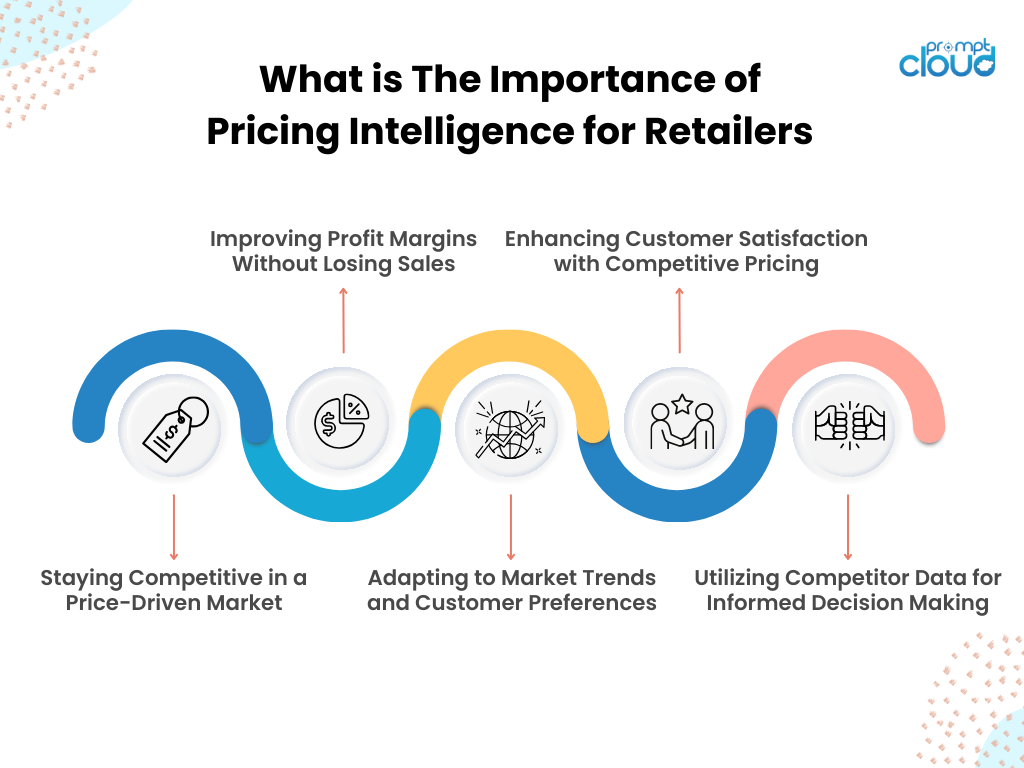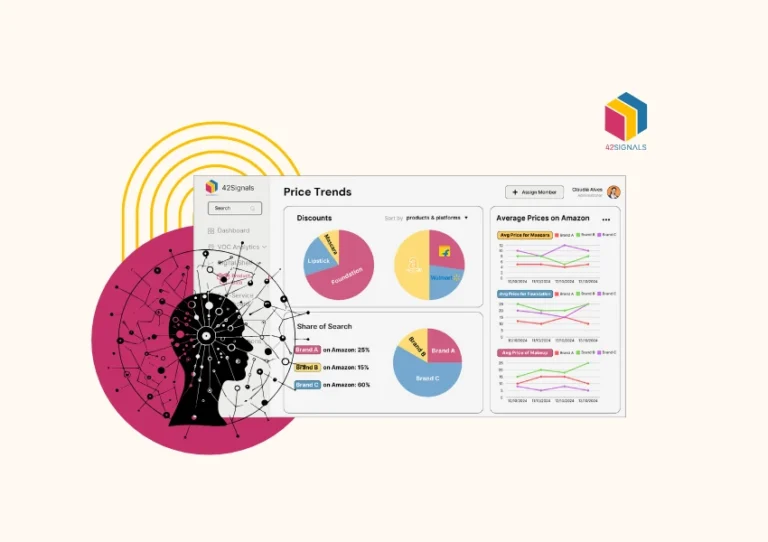Retail pricing is a critical element of business strategy, influencing both profitability and customer perception. In a highly competitive retail landscape, understanding the factors influencing retail pricing and identifying ways to stand out is essential for success.
What are the Factors Influencing Pricing In Retail?

Image Source: PromptCloud
1. Cost of Goods
Importance: This includes the direct expenses of product creation like raw materials and labor, and indirect costs such as transportation and warehousing. Efficient management in these areas can significantly reduce the base cost, allowing more flexibility in pricing.
Strategy: Invest in technology for inventory management, negotiate better terms with suppliers, and explore cost-effective logistics solutions.
2. Competition
Importance: Retailers must constantly monitor competitors’ pricing strategies to remain competitive. However, simply matching prices can lead to a race to the bottom. Understanding the value proposition of competitors is key.
Strategy: Implement competitive intelligence tools to analyze market trends and competitors’ pricing, enabling informed decision-making.
3. Customer Demand and Preferences
Importance: Demand elasticity varies among products and market segments. Retailers need to understand how price changes affect consumer buying behavior and preferences, tailoring their strategies accordingly.
Strategy: Conduct regular surveys and focus groups to gauge customer response to pricing, and use data analytics to predict buying patterns.
4. Market Conditions
Importance: External economic factors like inflation, recession, or shifts in consumer spending power greatly impact pricing strategies. Retailers must stay agile to adapt to these external pressures.
Strategy: Develop flexible pricing models that can quickly adjust to economic changes, ensuring business resilience.
5. Brand Positioning
Importance: The brand’s image in the consumer’s mind significantly influences how much they are willing to pay. Luxury brands, for instance, often price higher due to perceived value and quality.
Strategy: Invest in marketing and brand storytelling to enhance perceived value, allowing for higher pricing margins.
6. Legal and Ethical Considerations
Importance: Adhering to legal standards in pricing is crucial to avoid penalties and maintain a positive brand image. Ethical pricing also plays a role in consumer trust.
Strategy: Regularly review pricing policies to ensure compliance with laws and regulations, and promote ethical pricing as part of the brand ethos.
Ways to Stand Out in Retail Pricing: Retail Pricing Strategies
For a detailed guide on factors influencing retail pricing, read our article on the subject. In essence, there are six main factors –

1. Value-Based Pricing
- Focus on the value provided to the customer rather than just cost-plus pricing.
- Emphasize quality, customer service, and unique features.
2. Dynamic Pricing
- Utilize technology to adjust prices based on real-time market demand and trends.
- Examples include seasonal pricing, time-based discounts, and promotional offers.
3. Psychological Pricing
- Implement pricing strategies that psychologically appeal to customers, like charm pricing ($9.99 instead of $10).
- Create pricing tiers to offer options and cater to different segments.
4. Bundling and Cross-Selling
- Offer product bundles at a discount to encourage larger purchases.
- Implement cross-selling strategies to increase the average transaction value.
5. Loyalty and Membership Programs
- Develop loyalty programs offering special pricing or rewards to repeat customers.
- Encourage long-term customer relationships and brand loyalty.
6. Transparency and Trust
- Be transparent about pricing, avoiding hidden fees or charges.
- Build trust with customers through honest and fair pricing practices.
Conclusion
Retail pricing is not just about covering costs or matching competitors. It’s a multifaceted strategy that requires understanding market dynamics, customer behavior, and brand positioning.
Retailers who innovate in their pricing strategies, focusing on value, customer experience, and trust, are more likely to stand out and succeed in the competitive retail landscape.
With your pricing strategies set, the next step is analytics. Here’s our free guide to retail pricing analytics, enjoy!





